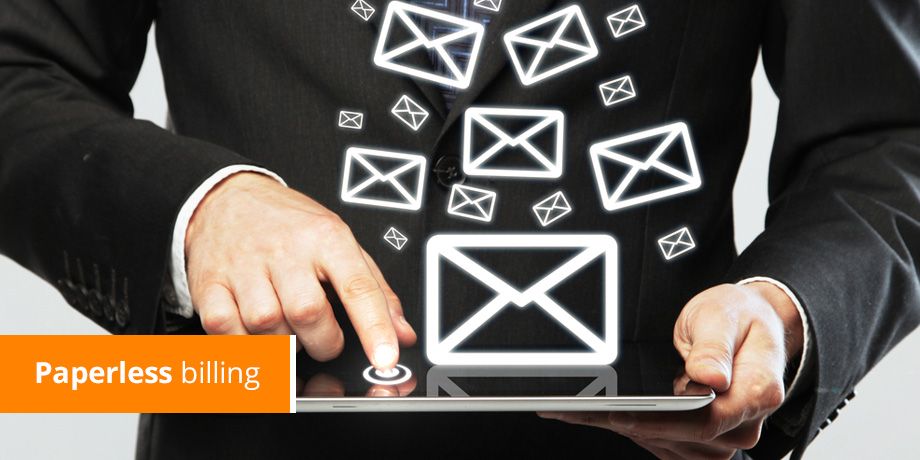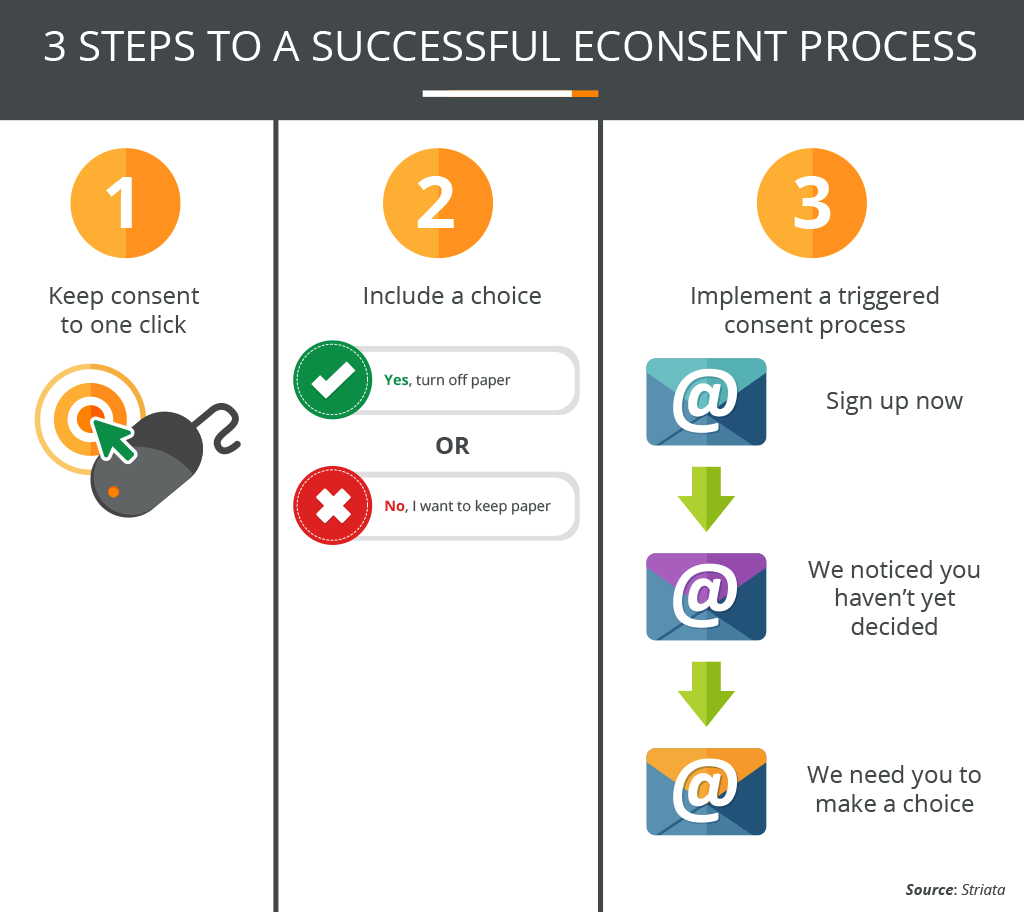
So why in this age of convenience and online savvy are so many companies struggling to get their customers to sign up to electronic billing and go paperless billing? Portals have been built, consolidators have been launched but still, consumers are not flocking to switch off that piece of paper.
Is it easy to say yes to paperless billing?
It all comes down to convenience. It’s the convenience of receiving the document easily and this is where sending it attached to an email is crucial (I don’t want to have to fetch my document from a website, when my mailman delivers it to my door without me having to do a thing). It’s also about the convenience of the sign up process. We need to think about how easy it is for customers to say yes to electronic billing.
Persuading customers to consent is more than just blasting an email out asking them to register.

The magic of one click
The number one barrier to eDocument sign up is the registration process. Once a customer makes the decision to go paperless, any subsequent click will see a significant drop-off. Each click in the process could see a 70% drop-off rate in consumers completing the registration. This means that only the ‘die hards’ that truly want this service will persevere through a registration process (which of course also requires them to remember yet another username and password). The best solution to this problem is getting the customer to sign up with just one click. Send them an email, ask them to consent by clicking a link and that’s that. The next email will welcome them to the service and let them know what to expect in terms of receiving their documents electronically.
Give a choice not a registration
Let customers feel like they should make a choice rather than having to sign up for a service. Give customers the choice of channel and they’ll feel compelled to make it. I’m not referring to a choice of whether to sign up or not– but giving them two buttons to choose from within the email. I choose eBilling and I want to stay on paper. Providing options allows them to make a decision between the two, rather than make a decision on whether to sign up for a service. Customers will feel motivated to make the choice rather than ‘decide later’ and then never getting back to the email. We’ve seen an uplift in sign ups to email billing using this tactic, and when presented with the choice, less than 0.5% of customers choose to stay on paper.
What is an eConsent lifecycle?
Set up an email consent lifecycle process based on activity. What happens with those customers that don’t take action the first time round? In some cases a second email campaign is sent a few months later when the momentum and top of mind awareness has dissipated. Implement a triggered process that sends emails to customers based on their inaction in the first/second/third email; it will yield results. Make sure that you time the emails well – too soon and you risk annoying your customer, too delayed and they would have lost that sense of urgency to switch paper off.
Email is the strategy that works
Getting customers paperless is not easy as it’s not their priority – it’s ours. Convenience plays a major role in sign up so think about how convenient your sign up process is and simplify it where possible.















